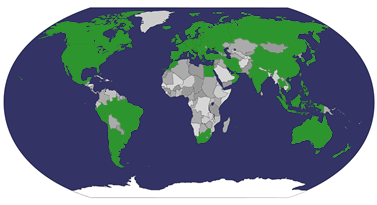
Five Storied Pagoda of To-ji Temple, Kyoto, Japan (UNESCO WHS)
Tō-ji (東寺) is a Buddhist temple of the Shingon sect in Kyoto, Japan. Its name means East Temple, and it once had a partner, Sai-ji (West Temple). They stood alongside the Rashomon, the gate to the Heian capital. It is formally known as Kyō-ō-gokoku-ji (教王護国寺, The Temple for the Defense of the Nation by Means of the King of Doctrines) which indicates that it previously functioned as a temple providing protection for the nation. Tō-ji is located in Minami-ku near the intersection of Ōmiya Street and Kujō Street, southwest of Kyoto Station.
Tō-ji was founded in the early Heian period. The temple dates from 796, two years after the capital moved to Heian-kyō.
Tō-ji is often associated with Kōbō Daishi (Kūkai). The well-known Buddhist priest was put in charge of Tō-ji in 823 by order of Emperor Saga. The temple's principal image is of Yakushi Nyorai, the Medicine Buddha.
The pagoda of Tō-ji stands 54.8 m high, and is the tallest wooden tower in Japan. It dates from the Edo period, when it was rebuilt by order of the third Tokugawa Shogun, Iemitsu. The pagoda has been, and continues to be, a symbol of Kyoto. Entrance into the pagoda itself is permitted only a few days a year.
The buildings at Tō-ji house a variety of ancient Buddhist sculptures. The grounds feature a garden and pond, in which turtles and koi swim. The grounds also house an academically rigorous private school, Rakunan, from which many students are sent to elite universities.
Recognizing the historical and spiritual significance of Tō-ji, UNESCO designated it, along with several other treasures in Kyoto Prefecture, as part of the "Historic Monuments of Ancient Kyoto" World Heritage Site.
東寺是一位于京都市南區九条町的寺院。又名教王護國寺。為東寺真言宗的總本山。山號八幡山、本尊藥師如来。以「古京都的歷史遺跡」的一部份而列入世界遺產名單之中。
References sources : Wikipedia




























 Postcards received from
Postcards received from 








































































0 comments:
Post a Comment